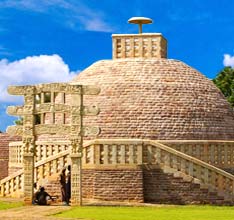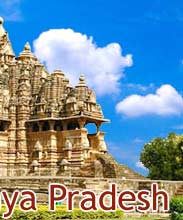Deemed as one of the seven sacred cities of the
Hindus; Ujjain occupies a dominant place in the Indian map, for its
historical importance and mythological associations. Sited in Madhya
Pradesh, the city is blessed with a divine halo in the form of the pious
Shipra River flowing through it. Also known as Shiva's land, the place
is today a highly venerated Hindu pilgrimage site. Due to its location,
Ujjain experiences a tropical kind of climate, which is archetypal of
the climatic condition of Central India. Dig up more information on the
weather and climate of the city with the following lines.
Summer
The summer season in Ujjain generally lasts from April to June. During
this period, the summer spell is experienced in the form of harsh
climate. The heat is scorching and the temperature may reach unbearable
heights. The maximum temperature during these months may soar to 48oC.
occasionally, hot winds called 'Loo' may blow during the afternoon,
which aggravates the heat. The summer temperature reaches a minimum of
about 24oC during the night.
Winter
Winters in Ujjain lasts for four months i.e. November, December,
January and February. Though cool, winters are very temperate and
pleasant. The maximum daytime temperature generally remains around 24oC
and the heat is mild and solacing. Nights are comparatively chillier and
the mercury level may drop to a minimum of 9oC. Generally,
light woolens are preferable during the day, but heavy woolens become
essential during night.
Monsoon
The monsoon season is initiated during the month of June and lasts till
the end of September. During this time, the place experiences moderate
to heavy rainfall and the average rainfall is recorded at 101 cm. The
humidity level slowly mounts and often heavy outpourings are followed by
periods of high humidity and bright sunshine. Typical of any other place
in Madhya Pradesh, the best time to visit Ujjain is between the months
of october and March.










